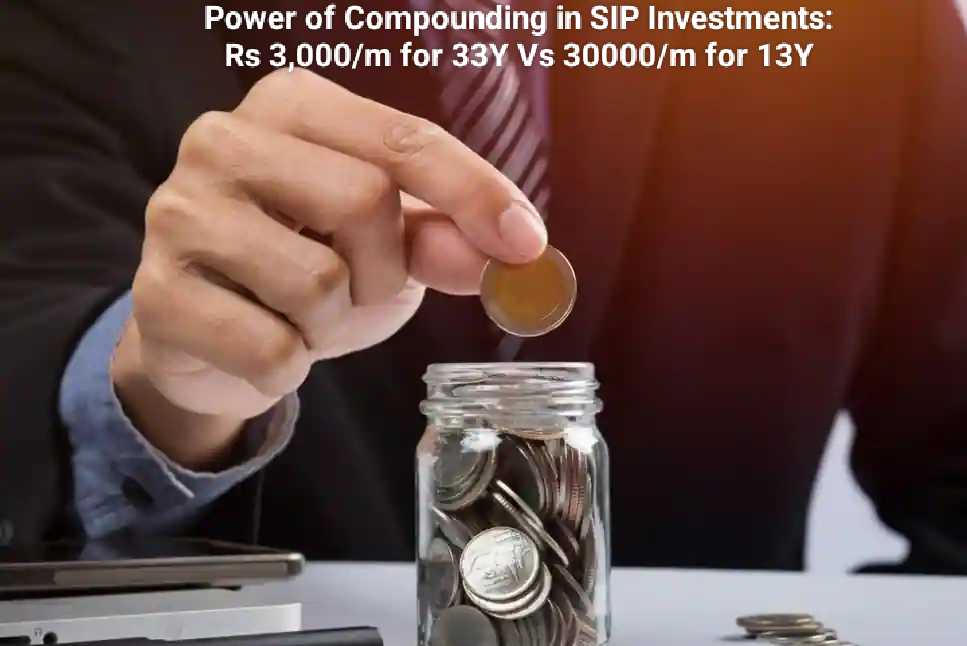Power of Compounding in SIP Investments: Rs 3,000/m for 33Y Vs 30000/m for 13Y

Quick Overview
Let’s examines the impact of compounding on two different investment strategies using Systematic Investment Plans (SIPs). It compares a monthly investment of Rs 3,000 over 33 years with a higher monthly investment of Rs 30,000 over 13 years. The analysis reveals how the duration of investment and the power of compounding affect the total returns.
In Short
Longer investment periods tend to yield higher returns due to compounding.
A smaller monthly investment over a longer period can surpass a larger investment over a shorter time in terms of total corpus.
While SIPs are generally safe, they are still subject to market fluctuations.
Equity SIPs carry higher risks compared to debt SIPs, which are considered safer.
Investors can adjust or stop their contributions at any time, allowing for personalized investment strategies.
Detailed Breakdown
1. Investment Overview
- Rs 30,00 Monthly SIP for 33 Years:
- Total Investment: ₹11.88 Lacs
- Estimated Returns: Rs 1,50,03,394
- Maturity Amount: ₹1.53 Cr
- Estimated Return Rate: 12% per annum
- Rs 30,000 Monthly SIP for 13 Years:
- Total Investment: Rs ₹46.80Lacs
- Estimated Returns: Rs 70,57,728
- Maturity Amount: ₹1.13 Cr
- Estimated Return Rate: 12% per annum
2. The Power of Compounding
Compounding is the process where the returns on an investment generate their own returns. This means that the longer you invest, the more you benefit from the growth of your initial investment and the returns it has already generated. In this case, the Rs 3,300 SIP over 33 years significantly outperformed the Rs 33,000 SIP over 13 years, despite the latter having a higher total investment.
3. Market Risks and Investment Types
SIPs are considered a relatively safe investment option, but they are still exposed to market risks. Investors should be aware that:
- Equity SIPs: These are riskier but can offer potentially higher returns.
- Debt SIPs: These are safer and usually provide more stable returns.
4. Flexibility and Control
One of the attractive features of SIPs is their flexibility. Investors can:
- Stop their investments at any time.
- Adjust the amount they invest, making it easier to manage their finances according to changing circumstances.
Important Details & Evidence
The calculations illustrate the significant difference in the total corpus built by the two investment strategies. Investing Rs 3,300 monthly for 33 years leads to a maturity amount of ₹1.53 Cr, compared to Rs ₹1.13 Cr from the Rs 33,000 investment over 13 years. This stark contrast underscores the importance of time in the investment equation.
Final Takeaways
The analysis of SIP investments highlights the critical role of compounding in wealth accumulation. It shows that:
- Long-term investments can yield higher returns even with smaller monthly contributions.
- Understanding the risks associated with different types of SIPs is essential for making informed investment decisions.
- Flexibility in SIPs allows investors to tailor their investments to their financial situations.
Overall, for anyone looking to build wealth through mutual funds, starting early and investing consistently can lead to significant financial gains over time.